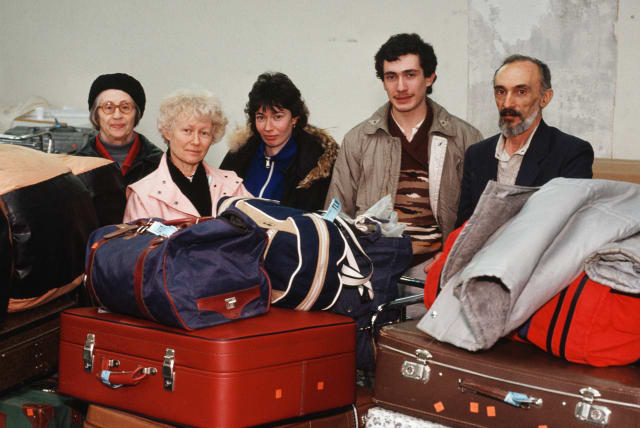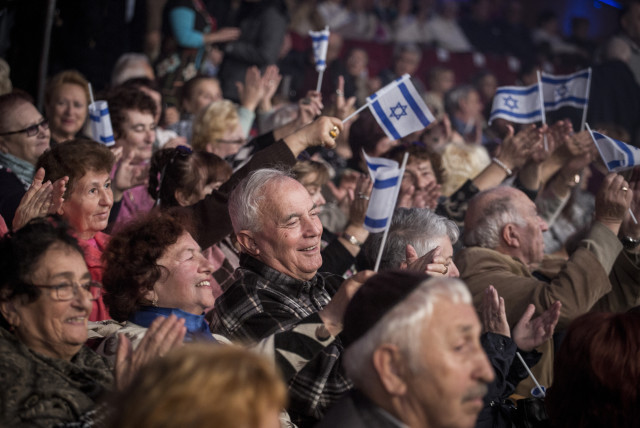Soviet Jewry's unsung heroes - opinion

Rabbi Jonathan Porath is well-known within his activist and conservative circles. For most of us, however, he is an unsung hero of the movement to liberate Soviet Jewry.
It was one of the most dramatic events in the life of Golda Meir.
As Israel’s first ambassador to the USSR, Golda journeyed to the Soviet Union and arrived in Moscow with her delegation in time for the Jewish New Year in September 1948. Her expectations of the attendance at the main synagogue were, to say the least, not high. A generation of Lenin and Stalin, coupled with the suppression of Judaism and Jewish identity, left the ambassador believing that no one would show up to greet her. She was in for a shock.
In his 1998 history of Israel, Sir Martin Gilbert uses the words from Golda Meir’s autobiography: “The street in front of the synagogue had changed. Now it was filled with people, packed together like sardines, hundreds and hundreds of them of all ages, including Red Army officers, soldiers, teenagers, and babies carried in their parents’ arms.
“Instead of the 2,000-odd Jews who usually came to the synagogue on the High Holidays, a crowd of close to 50,000 people was waiting for us.” She continues: “For a minute, I couldn’t grasp what happened – or even who they were. And then it dawned on me. They had come – those good, brave Jews – in order to be with us, to demonstrate their sense of kinship and to celebrate the establishment of the State of Israel.”
Stalin died in 1953 and a period of uncovering his crimes began, known as “The Thaw.” However, the suppression of Judaism and the attempt to destroy Jewish identity in the USSR continued. For a short while, under Stalin and during the period in which Ambassador Meir visited Moscow, the Soviet Union was on good terms with Israel, having voted for Partition in 1947. But by 1965, the USSR firmly had the Arabs and anti-Zionist propaganda in its grip.
The story of Jonathan Porath
A year before, 19-year-old Brandeis University student Jonathan Porath had just completed the final exam in his sophomore year in elementary Russian. He was preparing for a junior year abroad at Hebrew University in Jerusalem. It was a homecoming for him because his family had deep roots in Israel dating back to 1837.
He studied Russian literature and history with some of the great minds in the field at Hebrew University and after myriad arrangements, Porath left Haifa for the Soviet Union in March 1965 as a mere 20-year-old. He writes in his illuminating memoir Here We Are All Jews : 175 Russian-Jewish Journeys (Gefen 2022, “I didn’t realize it then, but it was to prove to be a pivotal experience in my life.”
Porath was courageous as a Jew searching for fellow Jews in a totalitarian state that spied on all its visitors, as well as almost all its native Jews. This was his pioneering trip to the Soviet Union. During his time there, two Soviet students approached him in Odessa and after asking him where he was from and where he was studying, responded jokingly but seriously in Hebrew, “We come from Tel Aviv!” He also witnessed the baking of matzah at the only synagogue in Leningrad.
During Porath’s visit, the year before the publication of the classic The Jews of Silence, a report on Soviet Jews by then-unknown journalist and writer Elie Wiesel was published. Wiesel, who would eventually be known as the world’s most prominent Holocaust survivor, asked his American audience, “Are we The Jews of Silence?” Wiesel described how Soviet Jews with limited knowledge of Judaism were rediscovering their faith and identity.
They expressed their Jewish identity at the synagogue on Simchat Torah. Israel’s lightning victory in the Six Day War a few years later inspired them to learn Hebrew and to plan to leave the USSR and make aliyah to Israel. Wiesel became a mentor to the later-ordained Rabbi Porath and the two men became friends and bonded over their mission.
Porath is concerned that Wiesel’s legacy will be forgotten with the passing of the years of the great man’s death. I told him I would write about different facets of Wiesel’s active life as a human rights activist, an advocate for Soviet Jewry, and the conscience that will not allow the Shoah ever to be forgotten.
But Porath’s mission, even before ordination, took guts and nerves of steel. He took students from United Synagogue Youth (USY), the teenage arm of Conservative Judaism, as a group to make contact with Soviet Jews inside the USSR. That their parents allowed them to go was a miracle in itself, but these kids had to be careful with every move they made in a surveillance state like the Soviet Union.
Whether at a “pioneer camp” or at the beach, the students were able to make meaningful contacts with Soviet Jews who were not stooges of the regime. USY girls danced with a small group of Jews at a synagogue in Leningrad and this was repeated in many cities where the authorities were always suspicious of these Jewish teenagers and their leader.
In Georgia, Stalin’s birthplace, the restrictions on Jews were far less in number and those were some of the most memorable visits. In fact, I recommend you read this book because there are so many inspiring stories of Soviet Jews making a meaningful connection with Jonathan Porath and his group of USY students through the years of his perilous visits.
Porath became Rabbi Porath with his own congregation; however, he and his family immigrated to Israel in 1984. With the breakup of the Soviet Union, Porath did a brilliant job of integrating Jews from the FSU into his neighborhood in Jerusalem. His diverse activities in helping the immigrants centered around his neighborhood in Ramot Alef. His work and that of the native Israeli volunteers were amazing.
Years later, former immigrants from the FSU, who were able to settle on their own, got together with Rabbi Porath and those volunteers who were there when the immigrants needed them. Rabbi Porath was not only a volunteer in the movement to liberate Soviet Jewry – alongside great leaders of the movement like Glenn Richter and Rabbi Avi Weiss – but he even continued his work with the American Jewish Joint Distribution Committee’s Russian Department (1993-2008).
One of the most uplifting encounters Rabbi Porath had was before he held that position. During a meeting with students in Kyiv when he asked these kids why they liked their newly-opened Jewish school better than studying in their former state Ukrainian school, they responded exuberantly, “Here we are all Jews.”
Rabbi Jonathan Porath is well-known within his activist and conservative circles. For most of us, however, he is an unsung hero of the movement to liberate Soviet Jewry, integrate refugees from the FSU into Israel, and ensure Jewish life will continue in that part of the world. He is also proud of the courage of the USY teenagers he took to Russia.
And he certainly celebrates the heroism of the Soviet refuseniks, the one million immigrants to Israel from the FSU, and the Jews who are still there. They were there for Golda Meir in unfathomable numbers and many decades later, the Jewish flame has not gone out.
The writer is a rabbi, essayist, and lecturer in Palm Beach, Florida.
Jerusalem Post Store
`; document.getElementById("linkPremium").innerHTML = cont; var divWithLink = document.getElementById("premium-link"); if (divWithLink !== null && divWithLink !== 'undefined') { divWithLink.style.border = "solid 1px #cb0f3e"; divWithLink.style.textAlign = "center"; divWithLink.style.marginBottom = "15px"; divWithLink.style.marginTop = "15px"; divWithLink.style.width = "100%"; divWithLink.style.backgroundColor = "#122952"; divWithLink.style.color = "#ffffff"; divWithLink.style.lineHeight = "1.5"; } } (function (v, i) { });

